Healthy kids quest: Vegetables and fruits
Grades 1 to 3 (Ontario)
Elementary cycles 1 to 2 (Quebec)
Vegetables and fruits form one of three categories of foods that Canada’s Food Guide recommends we consume regularly. In this module of the Healthy kids quest, kids will learn about a wide variety of vegetables and how they help our bodies function so we can grow, learn, and play.
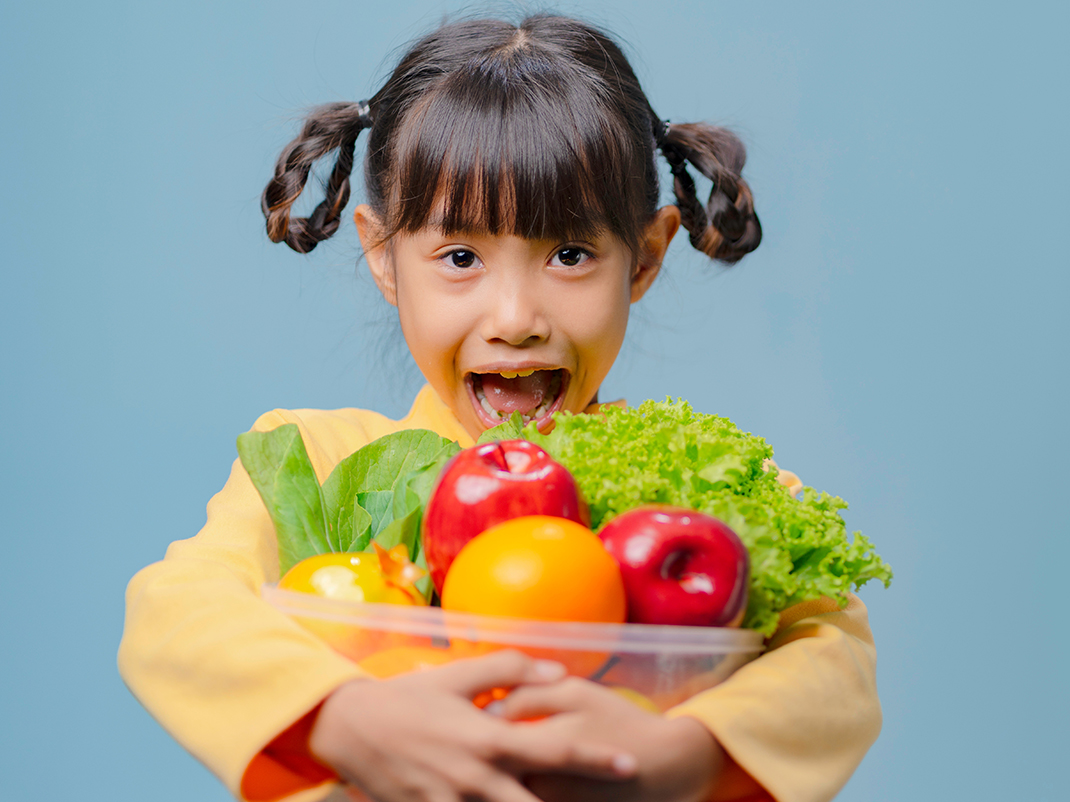
Share :
Vegetables and fruits
Vegetables and fruits are important. Together, they are one of three categories of foods that Canada’s Food Guide recommends we consume regularly. Their different textures, colours, and shapes—think of winter squash, kale, strawberries, red peppers, mangos, and avocadoes—mean we have lots of choices. More important, eating vegetables and fruits helps our bodies function so we can grow, learn, and play. Encouraging children to be curious and explore these foods can help them to develop a positive attitude towards eating.
Note: It’s best to cover the Lunchtime fun! module before starting this one.
Curriculum links
- Health and physical education: Healthy living
- Science and technology: Life systems
Learning objectives
- Explore the vegetables and fruits food category
- Understand that eating vegetables and fruits helps our bodies function
- Discover new vegetables and fruits
Learning method
- Playing a guessing game
Materials
- Plant diagram
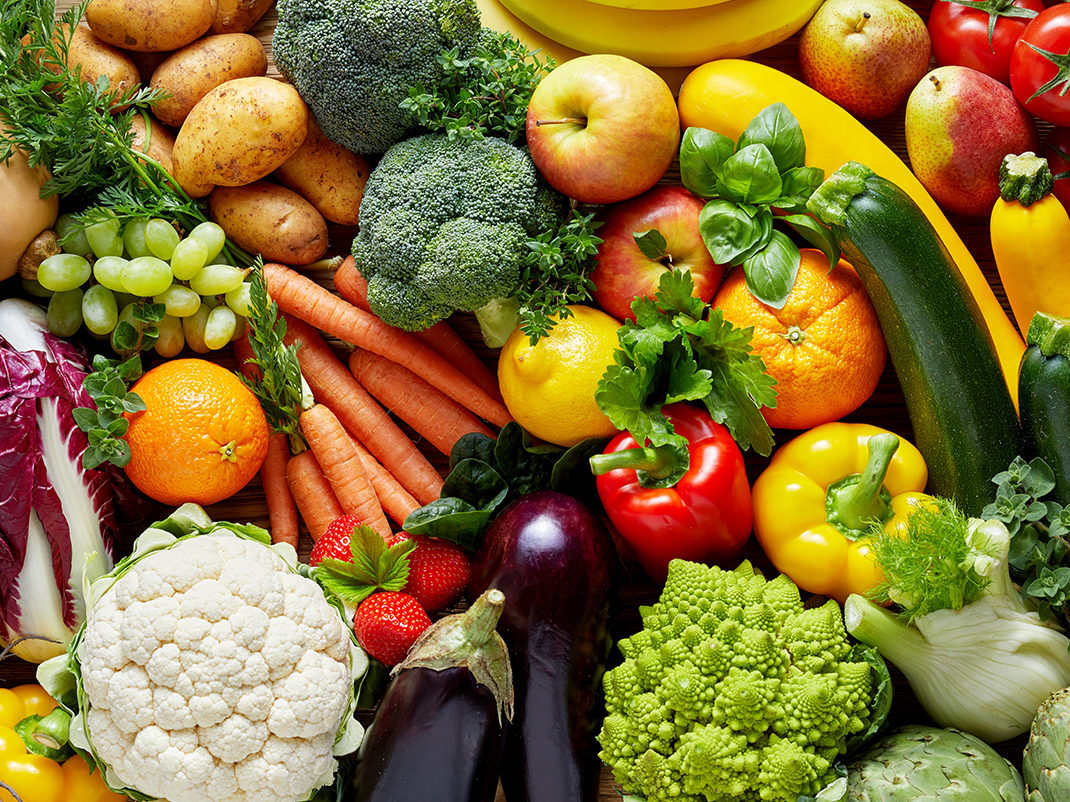
Instructions
Pre-activity: Class discussion
- Tell students that they will be focusing on vegetables and fruits. Canada’s Food Guide recommends we eat vegetables and fruits regularly.
- Ask students to name some examples of vegetables and fruits. Their answers will be varied (and numerous): tomatoes, cucumbers, watermelons, mushrooms, carrots, broccoli, apples, cabbage, pears, potatoes, spinach, peppers, onions, etc. Do they have any favourite vegetables and fruits? What are they?
- Vegetables and fruits, like all foods, are good for our bodies because they help us grow, learn, and play.
- Based on the examples students provided, there are a lot of vegetables and fruits out there to explore and taste! They are all different in colour, shape, texture, smell, taste, and size. Eating a wide variety of vegetables and fruits makes eating fun.
- Where do vegetables and fruits come from?
- Ask students to name the different parts of a plant or, if they have not yet learned about plants, walk through the different parts (flowers, stem, leaves, and roots) with them. Use a diagram of a plant as a visual aid.
- Fruits come from flowers.
- That’s why fruits contain seeds (note: some new fruit-producing hybrids have been developed to be seedless, like seedless watermelons and English cucumbers). Ask students to name a fruit.
- Vegetables are the leaves, stems, roots or other parts of plants that people eat.
- Give students examples. For example, carrots and beets are plant roots. Broccoli and cauliflower are flowers. Spinach and lettuce are leaves. Celery and rhubarb are stems. Ask students to name other vegetables and identify what part of the plant they are.
- Depending on the vegetable or fruit, we may be able to eat one part or multiple parts of the plant it comes from, or in some cases the entire plant.
- For example, we can eat only the stems of the rhubarb plant, because the leaves are poisonous, whereas we can eat the stems and flowers of a broccoli plant.
- Explain to students that they are going to play a guessing game. The goal of the game is to see how many vegetables and fruits they recognize, and to discover some new ones.
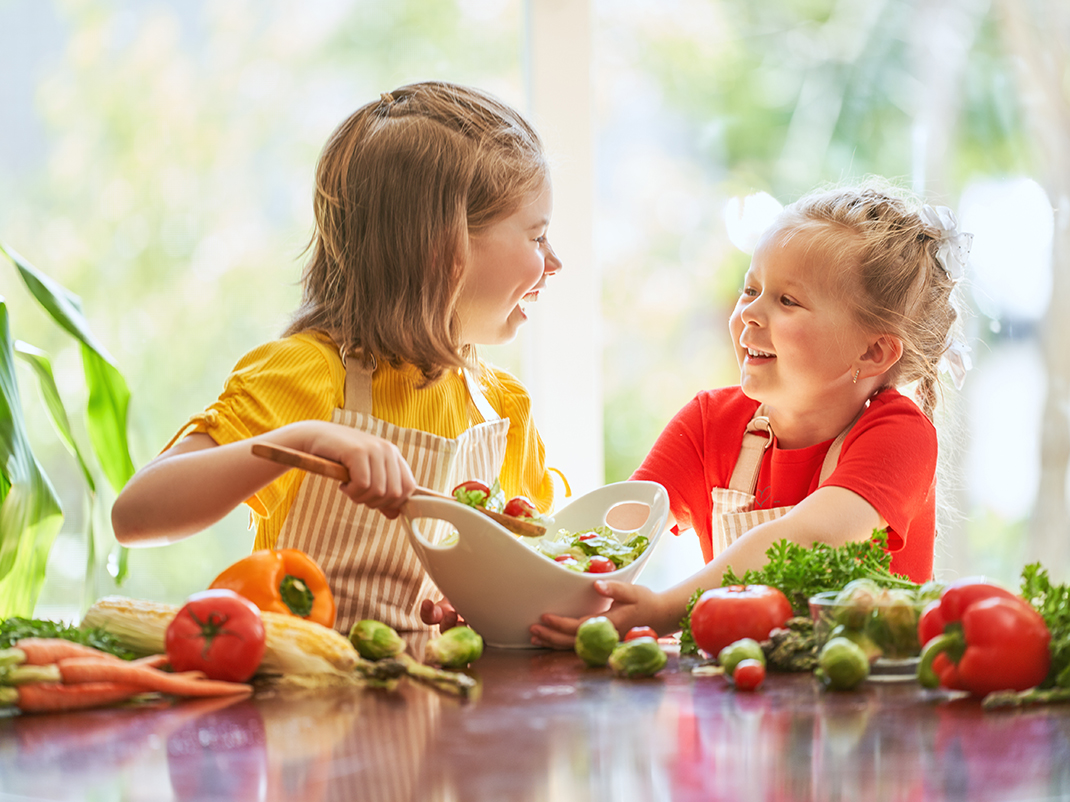
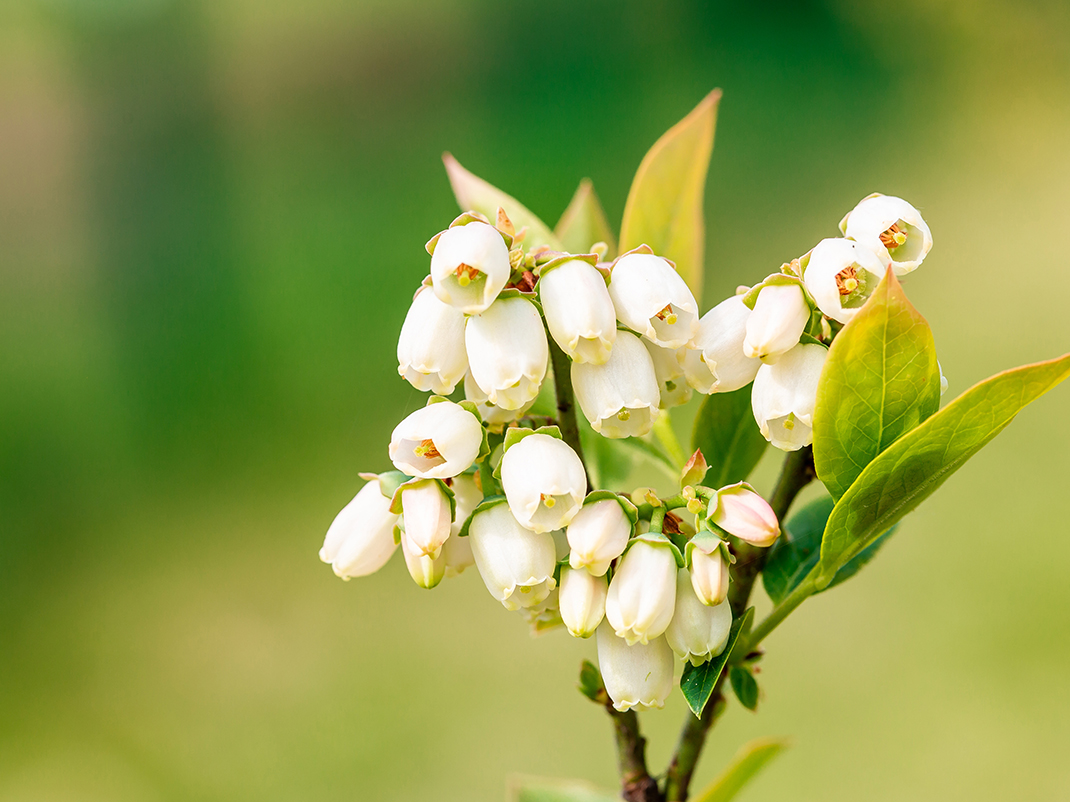
Suggestion
You may choose to add on a fun flower guessing game.
- Print out photos of the flowers of various vegetables and fruits, such as blueberries, bananas, garlic, strawberries, lemons, tomatoes, and pumpkins
- Stick the photos on the board at the front of the classroom and ask students to guess which flower will transform into which fruit
- For each photo, you can give hints about the colour, shape, texture, smell, taste, or size, of the vegetable or fruit, or about the climate it grows in
- Once students guess the correct vegetable or fruit, write the name under the photo of the flower
- Once all the flowers have been named, you can conclude the activity by asking students questions about what they’ve observed:
- Have they seen these flowers before?
- How are these flowers different from one another?
- Were they surprised by any of these flowers?
Activity A: Mystery food bag (Grade 1)
Materials
- 6 vegetables and fruits
- Opaque bag
Before starting: Prepare mystery food bag
Before beginning the activity, buy a variety of vegetables and fruits. Be sure to include some that students will know well and others that may be unfamiliar to them. This activity is an opportunity for students to discover new vegetables and fruits.
- Have students sit on the floor in a semicircle.
- Beyond sight of students, put one vegetable or fruit in the mystery food bag.
- Begin by giving students two clues that describe the hidden vegetable or fruit. For the carrot, for example: I’m an orange vegetable and I grow underground. Make sure that the hints you use are based on the food’s colour, shape, texture, smell, taste, size, or on where and how it grows. Do not use nutrition-based characteristics such as the food’s vitamin, mineral, or fibre content.
- Ask students to guess the vegetable or fruit in the bag. If necessary, give students additional clues until they guess it right. For the carrot, for example: I can be eaten raw or steamed; rabbits like me; I also come in yellow, red, purple, or white.
- Once students have guessed the vegetable or fruit, take it out of the bag.
- Repeat the exercise with another vegetable or fruit.
Suggestion
Ask students to take turns taking the mystery food bag home.
- Their task is to put a vegetable or fruit from home in the bag and bring it back to school, along with three clues
- They present the clues to the class, and the other students try to guess the vegetable or fruit in the bag
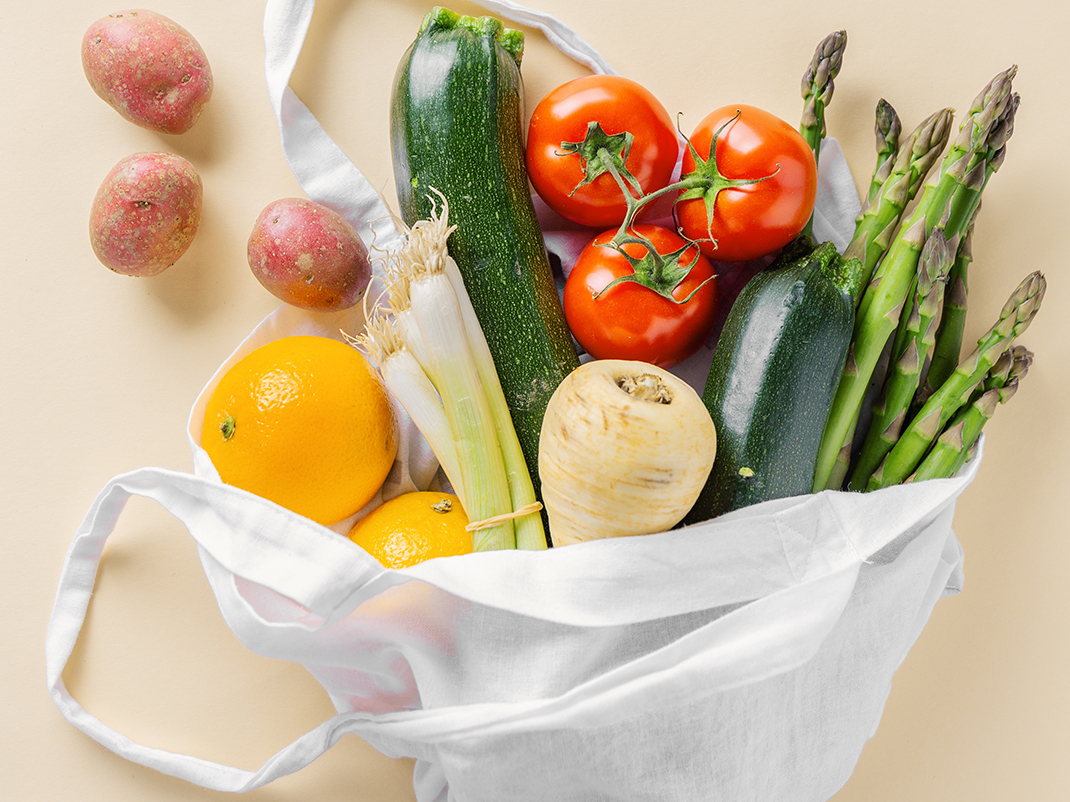

Activity B: Who am I? (Grades 2 and 3)
Materials
- Large sheets of construction paper cut into strips for headbands
- Stapler
- Copies of vegetable and fruit cards below
- Scissors
- Crayons (optional)
- Glue
Before starting: Prepare craft stations
- Print and cut out the images of vegetables and fruits below.
- Give each student one image. Ask students to colour the images. Collect the images when they are complete.
- Give each student a strip of construction paper and ask them to write their name on the strip.
- Make headbands out of the strips by stapling the ends together. Make sure the staple points are on the outside of the headbands, to avoid any discomfort.
Instructions
- Divide the class into teams of between 3 and 5 students. Explain to them how the game works. One student will pick a face-down vegetable or fruit card to wear in their headband, and then find out Who am I? by asking their teammates yes‑or‑no questions.
- In the centre of each team, lay out a few cards, face down. One player from each team puts on their headband and chooses one card. Without looking at it, they slip the card into the headband, making sure that it faces outward. Teammates must be able to see the vegetable or fruit that’s featured on the card.
- The player wearing the headband asks their teammates simple yes‑or‑no questions that will help them to guess the vegetable or fruit. Here are some sample questions:
- Do I grow underground?
- Am I a fruit?
- Am I an orange?
- When the player guesses the correct vegetable or fruit, put the card back in the centre and allow the next student to take a turn.
- When all students have had a turn, talk about the vegetables and fruits on the cards.
- Are all students familiar with them?
- Have they eaten them before?
- Do they have a favourite vegetable or fruit?
- Were there any vegetables and fruits they’ve never tried and are curious to taste?
Suggestion
Listening to clues from a partner, students draw an unseen vegetable or fruit, and try to guess what it is.
- Group students in pairs and ask them to sit back-to-back; give each a sheet of paper and a pencil.
- Give each student a card featuring a vegetable or fruit.
- Taking turns, partners give each other one clue about the look of their vegetable or fruit.
- Based on the clues their partners have given them, students draw a vegetable or fruit.
- The first student to guess the vegetable or fruit described by a partner is the winner.
- Redistribute the cards and repeat the exercise.
Activity B: Vegetable and fruit cards (4 pages)
Please see the printable PDF at the bottom of the page.
Vegetable Vinny and Frankie Fruit
Young students enjoy crafts and like to invent make-believe characters. This activity lets them use their imagination while finding out which vegetables and fruits are available in their local grocery store.
Curriculum links
- Health and physical education: Healthy living
- Arts: Visual arts
Learning objectives
- Distinguish vegetables from fruits
- Discover new vegetables and fruits
Learning method
- Creating a poster collage
Materials
- Grocery store flyers
- Large sheets of construction paper
- Scissors
- Crayons or markers
- Glue
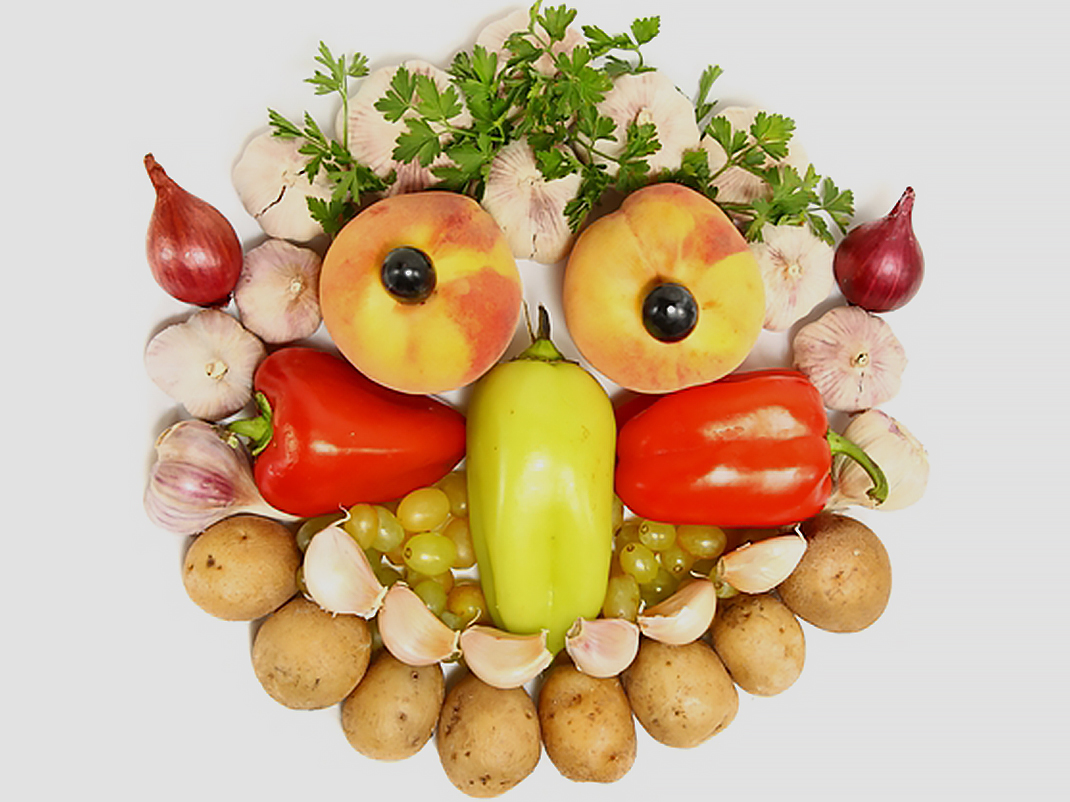
Instructions
- Explain to students that they are going to create posters of two characters—one poster of vegetable Vinny and another poster of Frankie Fruit—from pictures in grocery store flyers. Pay attention: Vegetable Vinny can only be made out of vegetables, and Frankie Fruit can only be made out of fruits!
- Give out the grocery store flyers and the craft supplies.
- If needed, help students distinguish vegetables from fruits in the flyer photos.
- Once students have made their characters, ask about the vegetables and fruits they chose to use. Are they all ones that students recognize? What are they called? Have students tried them? Did they like them?
- Put the posters on display around the classroom or school. Students can use them to distinguish between vegetables and fruits.
My superhero
Superheroes are popular with children. What if superheroes were “edible”? In this activity, students create their own superheroes out of food. Doing so gives them an opportunity to use their knowledge of vegetables and fruits, as well as their imagination.
Curriculum links
- Health and physical education: Healthy living
- Arts: Visual arts
- Language: Oral communication
- Language: Writing
Learning objective
- Investigate the different characteristics of food
Learning methods
- Creating a superhero using the characteristics of various vegetables and fruits
- Preparing a fact sheet on the superhero
- Illustrating the superhero
- Introducing the superhero to the class in an oral presentation
Materials
- Sheets of construction paper
- Crayons or markers
- Blank superhero fact sheets
- Scissors
- Glue
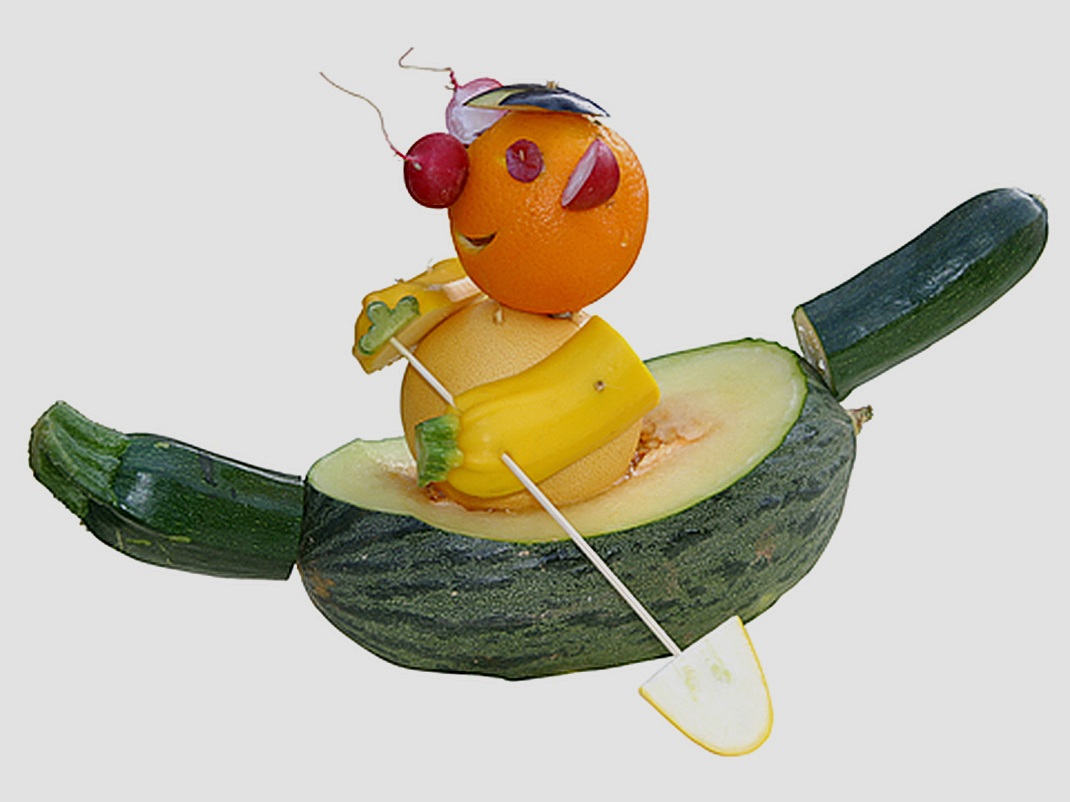

Instructions
Pre-activity: Class discussion
- Ask students to name their favourite vegetables or fruits. Why do they like those ones in particular? What do they think would be the perfect vegetable or fruit? A raspberry as big as an apple? Blueberries in bunches, and in all different colours? A strawberry-flavoured banana?
- Ask students to name their favourite superheroes. Why do they like one particular character more than another? What are their heroes’ superpowers?
Activity: Creating my superhero
- Explain to students that they are going to create their own superheroes — made out of food. Using their imagination, students will make their own unique superheroes, choosing vegetables and fruits that will arm the character with superpowers.
- Show students the printable PDF at the bottom of the page.
- Explain the rules for creating superheroes:
- The bodies of the superheroes must be made from vegetables and fruits
- The superpowers they possess can be based on the characteristics of those vegetables and fruits
- For example, the superhero can spray juice to distract their enemies and quench thirst, or can use their prickly peel to defeat enemies and protect the vulnerable
- Offer students various conceptualization tools for developing their characters (e.g., constellations, diagrams, or sketches). Suggest they begin by choosing their vegetables and fruits, and then determine the different characteristics of those foods, such as colour, shape, texture, smell, taste, and size
- Give each student a copy of the blank superhero fact sheet below. Ask them to write a short description of their superhero’s physical appearance and superpowers.
- Once the superheroes have been imagined and described on the fact sheets, give out the craft supplies and ask students to use them to illustrate their superheroes.
- Using tape or a stapler, attach students’ illustrations to their fact sheets.
- Ask each student to introduce their superhero (and describe its superpowers) to the rest of the class. They can prepare these oral presentations at home.
- Put the superheroes (fact sheets and illustrations) on display around the school.
Suggestion
Ask students to use real vegetables and fruits to make sculptures illustrating their superheroes. They can make these sculptures at home and bring them to school for their presentations.
Superhero fact sheet for students (1 page)
Please see the printable PDF at the bottom of the page.
Wanted: New vegetables or fruits
Nowadays, grocery stores are filled with all different types of vegetables and fruits. As new varieties become available, our choices broaden. Many of us are unfamiliar with some of these new vegetables and fruits. What do they taste like? How do we prepare them? Where are they grown? How are they harvested? This research project allows students to find out about new foods, and to share their discoveries with their class.
Curriculum links
- Health and physical education: Healthy living
- Language: Oral communication
- Language: Writing
- Social studies: Canada and the world
- Science and technology: Life systems
Learning objectives
- Discover new vegetables and fruits
- Learn where vegetables and fruits come from and how they are grown
Learning methods
- Carrying out research on an unfamiliar vegetable or fruit
- Preparing a descriptive poster about an unfamiliar vegetable or fruit
- Sharing the research results in class through an oral presentation
Materials
- Large sheet of stiff paper
- Crayons or markers
- Scissors
- Glue

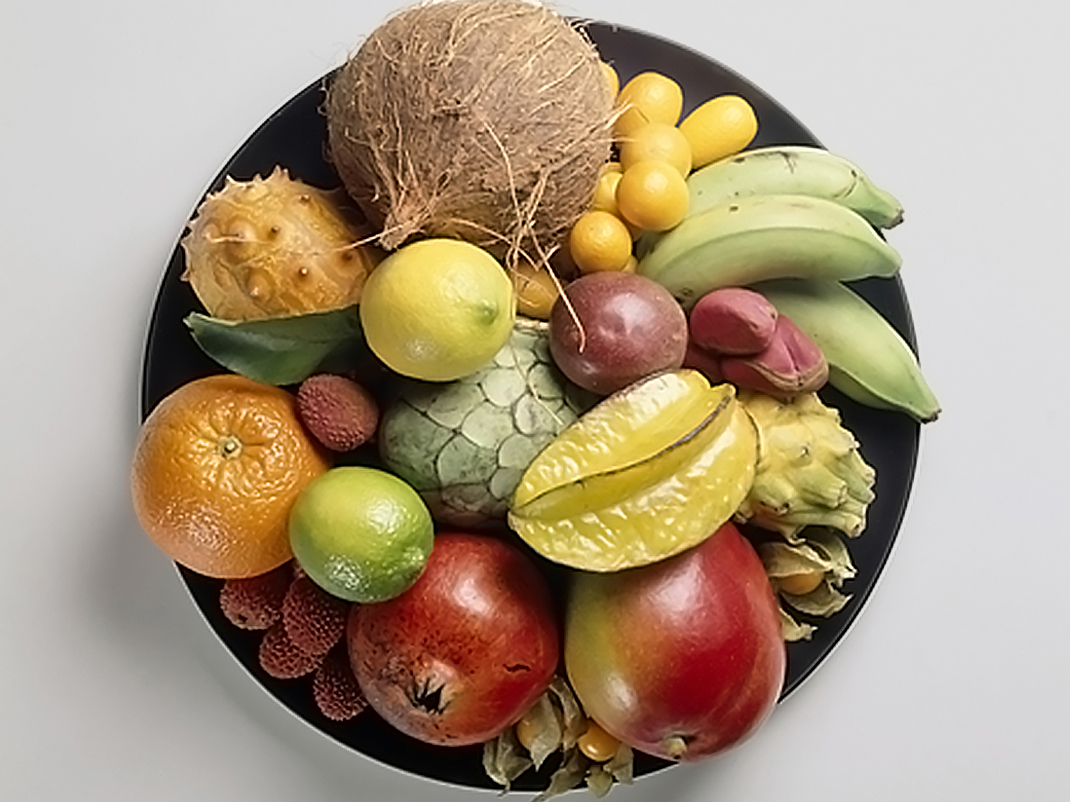
Before starting: Outlining the research project for students
Decide on the extent of research students should carry out, based on their grade level. Using the examples below, make a list of questions for students to answer.
- What is the name of the food?
- Is it a vegetable or a fruit?
- Where does it grow: in Canada or elsewhere?
- Which part of the plant can we eat?
- Do you like the taste of this new vegetable or fruit?
- How is it prepared? Do we eat it raw, cooked, mashed, or prepared in some other way?
- What are some examples of dishes and recipes that use this vegetable or fruit?
- How do we store this food: in the refrigerator, on the counter, in the cupboard, or in the freezer?
Other questions can be added about the plant’s essential needs:
- Does the plant need much heat to grow?
- Does it need a lot of water or very little?
- Does it need shade or sunlight?
As appropriate, add questions about the country or region of the world in which the vegetable or fruit is grown:
- Where in the world is this food grown?
- Where is that country or region in relation to Canada?
- Can you find it on a map of the world?
Instructions
Pre-activity: Class discussion
Talk to students about the growing variety of vegetables and fruits we see in grocery stores. You may want to introduce some native or non-native vegetables and fruits, and ask students to identify them.
- Have any of them tried these foods?
- See if they can describe each food’s taste and texture.
- How is it prepared: do we cook it, marinate it, or eat it raw?
Activity: Researching new vegetables and fruits
- Explain to students that the purpose of the activity is to discover vegetables or fruits that are new to them.
- Send a note to parents explaining the research project and include the list of selected questions.
- Students are to choose one vegetable or fruit that is unfamiliar to them or that they have never eaten before and they want to try
- Suggest that students visit the grocery store with their parents to choose the new vegetable or fruit
- They can purchase it together and eat it at home as part of the research. If they cannot find it in the grocery store, students can research online to find out the taste and texture of the food.
- At home or in class, students carry out their research on the vegetable or fruit, using the questions you have provided.
- They can print out pictures that illustrate what their vegetables or fruits look like, how they are grown, where they are grown (location on a map), and recipes that include them
- Students prepare their posters, using information they have researched, and include any material they have printed out
- They can also make their own illustrations of the vegetable or fruit
- Next, ask students to present their posters in class. They can prepare their presentations ahead of time at home. They can bring their vegetables or fruits to class to show the other students.
- Put the posters on display in the classroom or around the school, so that students can share what they have discovered.
Printable PDFs
Vegetable and fruit cards (PDF, 1.9 MB)
My superhero example (PDF, 186 KB)
Superhero fact sheet for students (PDF, 196 KB)
You may also be interested in

Healthy kids quest: Be active!
In the Be active! module, children will learn that physical activity plays an important role in our lives: it contributes to our mental well-being and quality of life.
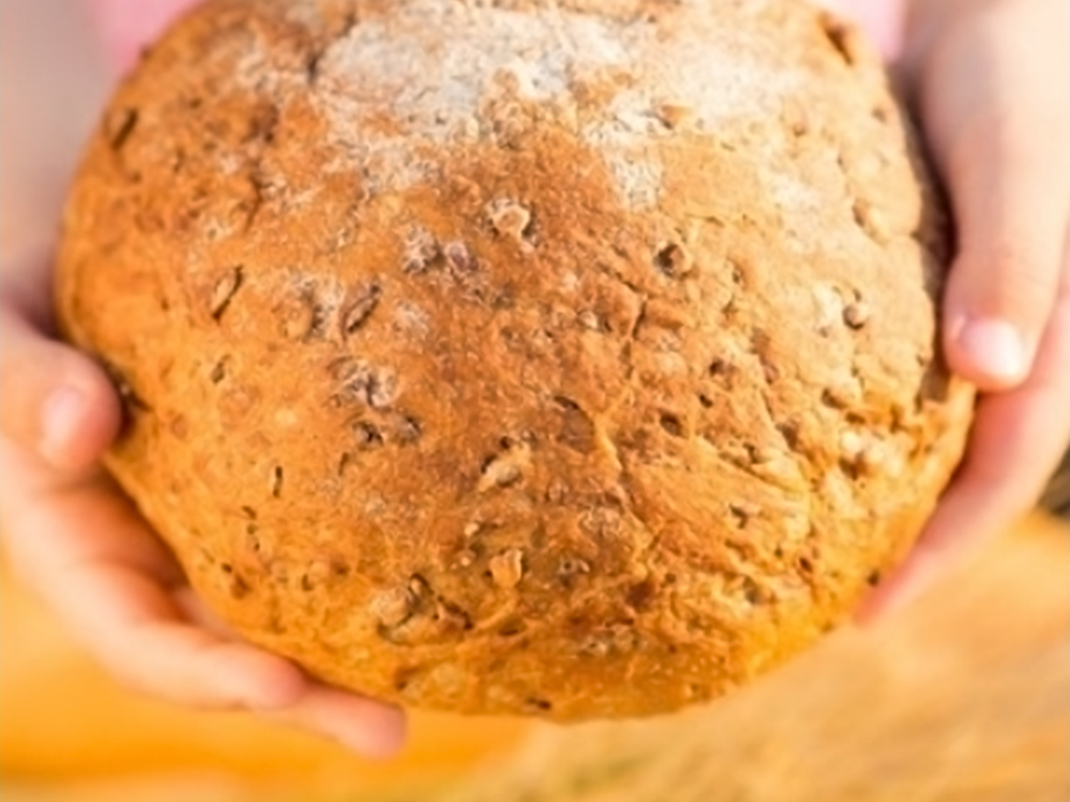
Healthy kids quest: Whole grain foods
Whole grain foods are delicious and, along with other foods, they provide us with the nutrients we need to grow, learn, and play. In the whole grain foods module of the Healthy kids quest, students will study the different parts of a grain and learn how wheat, rice, corn, and other whole grains can be prepared and enjoyed in many different ways.

Healthy kids quest: Memorable meals
Food helps our bodies function, but it also gives us an opportunity to enjoy ourselves, as we spend time with others in our families and communities, and connect with our culture, traditions, and history. This module encourages students to discover or look deeper into their family recipes and traditions.